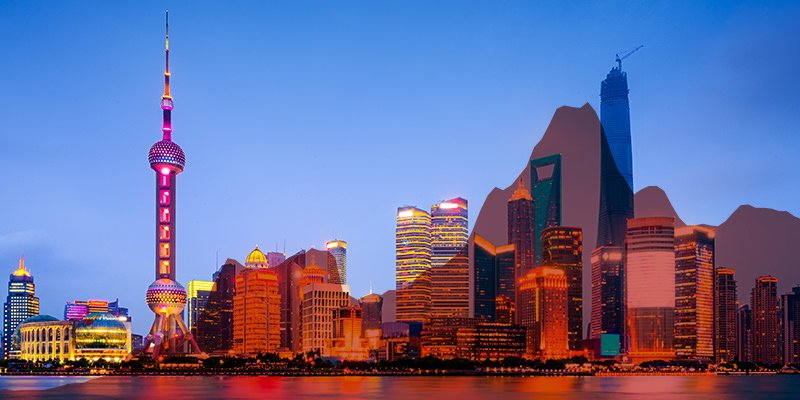
In 2005 the demand for fine wine in China began to explode, pulled along by massive economic growth. The nation’s newly minted millionaires went looking for places to spend their money — and they found an outlet in high quality wines and spirits, along with so many other luxury goods. At the same time, executives turned to fine wine as the ultimate gift, which came to convey prestige, status and respect – these gifts were especially prominent in many of the under-the-table deals which were helping to fuel the growth. The market for imported fine wine boomed.
Seduced by rapidly inflating prices, ultra high end wine producers — particularly Bordeaux’s classified growths — paid little mind as to why Chinese buyers were snapping up their wines. Those producers are now learning a painful lesson a great many in Silicon Valley would do well heeding, as the true source of the demand wasn’t a sudden new found appreciation for their wines; rather the wines were being doled out like trophies among China’s business and government elite and then suddenly – for reasons we will explain later – despite predictions to the contrary, the market dropped out. Because as with everything in business, it pays to know why people are consuming and nothing is ever truly predictable.
The demand for wine in China got off to a roaring start in 2005. As the market continued to rise by 20% year over year, importers could not scramble fast enough to open offices in China. While there was little understanding of wine among the purchasers – or a willingness on the part of the sellers to fully educate them – there was a clear recognition of the world’s top wines, and names like Lafite, Margaux and Latour began to be prominently seen in the rapidly growing coastal cities. Advertising as well took on a huge amount of importance in this emerging market, as the wine that was viewed as the most prestigious became the wine that was the most highly sought.
Rather than educating their consumers, the elite of the wine world not-so-quietly mocked them, repeating rumors about wealthy Chinese businessmen who disliked their own wines so much that they mixed them with Coca-Cola.
France benefited the most from this new demand as Chinese consumers had a bias towards what they saw as wine’s country of origin. To keep up, French regions began exporting massive amounts of wine to the country and even packaging that wine with specific labels and colors to further appeal to their new consumers. The result was rising prices – at the market’s height a case of Lafite was going for as much as $23,200 – and even more wealth accumulation for the top producers.
This increased demand even shielded a majority of high-end producers from the Great Recession of 2008, as many across the world, especially in America, began spending less, China continued to spend more, and demand for wine only increased. This caused many in the wine world to consider themselves “immune” to the market forces happening around them, and further bet on China as the market of the future.
As demand continued to increase, many incredibly intelligent people continued to comment on how immature the wine market in China remained. If this was the demand the wine and spirits world was experiencing now, just imagine the impact when the market fully matured and a massive middle class were truly spending at their full capacity. It was this confidence that caused many to shrug off a dip in the market in 2012, saying there was still much potential among segments of the population that hadn’t even begun to buy. Yet it seems this dip didn’t cause many to finally question why their customers were buying their wines in the first place.

All of this growth obviously impacted the world market as a whole. Premium wines from the most celebrated regions became so expensive that many consumers in markets that used to be relied upon – specifically the US – began to look for other alternatives. American consumers had been priced out. For many, the rising prices continued to demonstrate how out of touch the top regions were with America’s growing population of wine consumers – who began to look elsewhere for wines and regions that seemed more down to earth, with prices to match.
While some seemed to worry as historically loyal consumers began to seek out other producers, the majority remained squarely focused on China. As the bubble expanded into its most irrational phase, Chinese investors — much to the public dismay of the French — began buying prestigious vineyards in Bordeaux in order to export 100% of those vineyards’ wines back to China. Gifting remained the main driver for these purchases, and was the catalyst for over 60% of all wines purchased at the peak of the frenzy.
Then in late 2013, the music stopped. When new Chinese President Xi Jinping sharply cracked down on gifting as part of his broader anti-corruption drive, wine (and spirits) sales began to fall. A market force no one seemed to have predicted had pierced the bubble. Gifts were an ostentatious aspect of the corruption Xi sought to root out — if someone did you a political favor, or bent a rule, a gift was given and received. Many believe that the wines given were often never even consumed, and that fact didn’t really seem to matter. With no more gifts, the market began to slow. As demand currently remains soft, prices sit near five-year lows, with many of the finest wines still off nearly 40% from their gifting-induced peaks in 2011.
This March, the region of Bordeaux reported a decline in sales of 13%, with exports to China down by 9%. This year luxury conglomerates such as LVMH have reported stagnant or even falling earnings (particularly when adjusting for currency swings). At LVMH — the MH stands for Moët Hennessy — wine and spirits sales in Asia weighed the most on their balance sheet. Against a backdrop of a rising dollar, producers who focused almost solely on China face an uphill battle to win back the attention of established market consumers who were forced to turn elsewhere for fine wine over the past half decade.
The lesson of what happened in China centers on the broader lesson of growth in general. If you are acquiring your consumers based on a force that has little to do with the intrinsic value of your product — whether that be gifting, unsustainable marketing or a delivery system you don’t own — you shouldn’t be surprised when it turns out your growth was never sustainable. And by focusing on that seemingly easy growth, you potentially lose a host of more loyal consumers.
